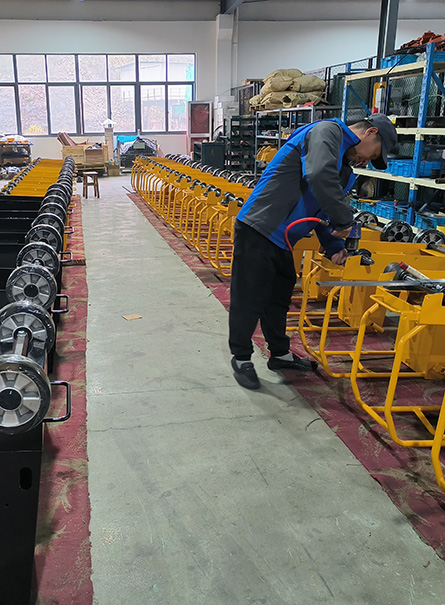In the realm of DIY hardscaping, the most common pitfalls involve the base, edge restraint, or paver placement. Focusing on the base, it's paramount to understand its critical role in the success of laying pavers. Establishing a stable base constitutes half the battle in paver installation. The key to a solid base is compacting your gravel effectively. This article will guide you on how to select the right compactor for a dependable paver base.
Steel Tamper vs. Plate Compactor
The compaction of gravel typically involves one of two tools: a steel tamper or a plate compactor.
What is a Steel Tamper?
A steel tamper is designed for compacting materials such as gravel and asphalt. It consists of a flat metal plate with a long handle, allowing for easy compaction of gravel for your paver base.
What is a Plate Compactor?
A plate compactor is essentially a larger, motorized version of a steel tamper. It's more suitable for larger paver projects like walkways and patios, where a standard steel tamper might not suffice.
Differences Between a Steel Tamper and a Plate Compactor
The primary differences between these two compaction tools lie in their size and cost. A hand tamper is more portable and affordable, while a plate compactor, due to its size and power, typically requires rental from a hardware store and may need a truck for transportation.
How to Select a Plate Compactor
When choosing a plate compactor, consider its compaction capability, which is often reflected by the manpower needed to transport it. For instance, if a compactor requires two people to move, it's likely suitable for compacting two inches of gravel.
Light-Duty Plate Compactor
For pedestrian traffic areas like walkways and patios, a 14-inch plate compactor is advisable. You should compact two to four lifts of gravel to reach the desired base thickness.
Medium-Duty Plate Compactor
For areas with heavier pedestrian traffic, a 20-inch plate compactor should be used to compact four to six lifts of gravel.
Heavy-Duty Plate Compactor
For driveways and parking lots that will support vehicles, a 30-inch plate compactor is necessary. Plan to compact six to eight lifts of gravel for a strong base.
Common Questions
Is Renting a Compactor Necessary?
While it's possible to compact a patio base manually with a hand tamper, for larger areas, a power compactor can save considerable time and effort. Although renting a power compactor is more costly, it's generally worth the investment for the efficiency it brings.
Where to Get a Compactor and Cost?
Plate compactors can be rented from home improvement stores like Home Depot or Lowe’s. The cost to rent a 14-inch plate compactor typically starts around $85 per day.
Learn to DIY
Laying pavers is a skill that can be mastered with the right guidance. Our DIY training videos are designed to simplify the process, making it accessible for anyone looking to undertake their own patio or walkway project.
How to compact pavers step by step
On the compaction, we navigate through a medley of techniques, from the straightforward and economical to the intricate and pricier side of the spectrum.
Use a steel handle tamper
For the seekers of a no-frills method to snug pavers without the bulkiness of a plate compactor, the steel handle tamper stands out. This tool, simple in its essence, reduces the peril of paver damage with its less aggressive impact.
Adopting a Plate Compactor with Protective Pad
Elevating the compaction game, incorporating a plate compactor paired with a protective pad avoids marring the fresh pavers. Many suppliers offer these compactors, and protective pads can be sourced from niche providers such as Horizont Machinery. This approach, though more of an investment, safeguards the aesthetic integrity of your pavers.
Pro Compaction Insights
- Timing Compaction After Joint Sand: An essential maneuver is to compact subsequent to the dispersal of the final sand layer. Initiating compaction prematurely might yield a landscape of unevenly seated pavers. Commence with a thorough sweep of sand, then proceed to compact, ensuring the sand snugly settles between the pavers.
- Tri-Directional Compaction Approach: A solitary pass with the hand tamper or plate compactor doesn’t suffice. Aim for a triad of compaction runs: vertical, horizontal, and diagonal, to ascertain a uniformly compacted base. For those unreachable crevices and corners, the hand tamper proves indispensable, ensuring an evenly compacted surface.
Embarking on Your Paver Quest
On the verge of launching a paver endeavor? Our complimentary Project Planning Guide is at your disposal, meticulously charting the preparatory steps essential for your project's success.


